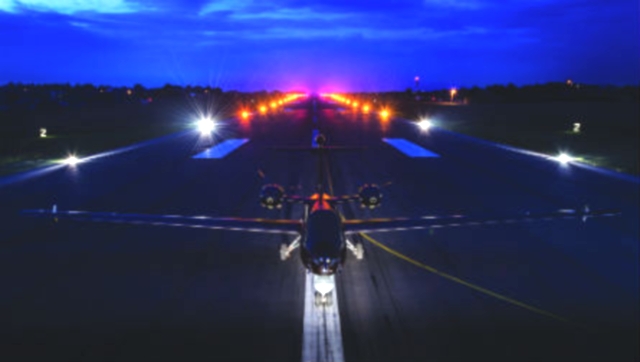 BAE and Dassault will use Farnborough to strengthen their relationship.
BAE and Dassault will use Farnborough to strengthen their relationship.
Contracts linked to two new activities are likely to be signed at or around the show, says Tom Fillingham, director of future combat air systems (FCAS) for BAE’s Military Air & Information business unit.
The first, to run for a period of 18 months, will cover technology maturation and risk-reduction work on a joint medium-altitude, long-endurance (MALE) unmanned air system named Telemos, with the UK company’s Mantis platform identified as a starting point.
“Part of the process is to look around weaponisation, but there are no specifics,” Fillingham says. “We want the product to be as flexible as possible.”
Once this next phase of collaboration has been completed, the partners are likely to push towards a full development and production contract, with a future work-share allocation already having been agreed. “But first we must demonstrate that the technologies are mature,” he says.
“At Farnborough we will also look for a positive indication from the governments that they are willing to allow BAE, Dassault and engine suppliers [Rolls-Royce and Snecma] to work on an 18-month FCAS demonstrator preparation programme,” Fillingham says. This will draw on the companies’ respective experiences with the Taranis and Neuron air vehicles, both of which are expected to make their flight debuts within the coming months.
A scale model of a conceptual future strike aircraft will be on display outside BAE’s exhibit at the show, but Fillingham stresses that this “is not the designed vehicle” for any Anglo-French programme. The company also does not rule out the possibility of manned systems being considered as a part of such studies.
Also at Farnborough in model-only form will be the BAE-led Taranis design, which is now expected to make its delayed first flight early in 2013. Recent test work involving the stealthy aircraft has included successful engine intake integration trials conducted at Rolls-Royce’s Filton site in Bristol, and radar cross-section (RCS) pole testing performed by BAE in Warton, Lancashire.
Speaking inside the highly secure 326 Hangar at Warton last month, Fillingham said data from the RCS test work was still being assessed by the UK Ministry of Defence and its Defence Science and Technology Laboratory. However, he revealed that “the results are very promising”.
BAE had previously expected the Taranis to make its debut flight in 2012, but says the schedule was pushed back following a systems review performed late last year. “First flight isn’t really the key thing – we’re developing a technology,” Fillingham notes. “If you chase a first flight you make mistakes.”
Several of the company’s previous unmanned systems, including the Mantis and earlier Corax and Raven technology demonstrators, were tested at the secluded Woomera range in South Australia, but Fillingham declines to say where it will take Taranis. “I can’t give information on when and where we will go next year, but we have agreed a series of flight-test activities, which we will complete in 2013,” he says.
In another development, BAE has revealed plans to return its Mantis demonstrator to flight status, with the MALE type to take to the skies in the UK for the first time early next year in support of the Telemos effort. With a wingspan of almost 20m (65.6ft), the stored aircraft has recently been inspected at Warton and is described as being “pretty much good to go”. Three or four potential sites are being looked at to host the future trials work with the autonomous air vehicle.
Fillingham says BAE is investing some £4-5 million in 2012 to return the Mantis to use, with more to be spent next year. It is also hoping to secure backing from the MoD to fly the aircraft, which will also draw on technologies showcased with its now-parked Herti product.
Getting a large, twin-engined UAS to fly in UK airspace will require working closely with the nation’s Civil Aviation Authority, but is also intended to support an ongoing effort to perform such activities on a more routine process than is possible today.
For BAE’s part, Fillingham says, “the technologies will ultimately go into Mantis and hopefully other of our UAS. They will also give the UK a really strong position re the Anglo-French programmes.
“What we’re trying to develop is a product range that encompasses the future of British aviation, and a set of UAS capabilities that can be integrated in systems to meet UK requirements and those of numerous other countries,” he adds.
Photo: Mantis – BAE Systems
Source: Flight Global
